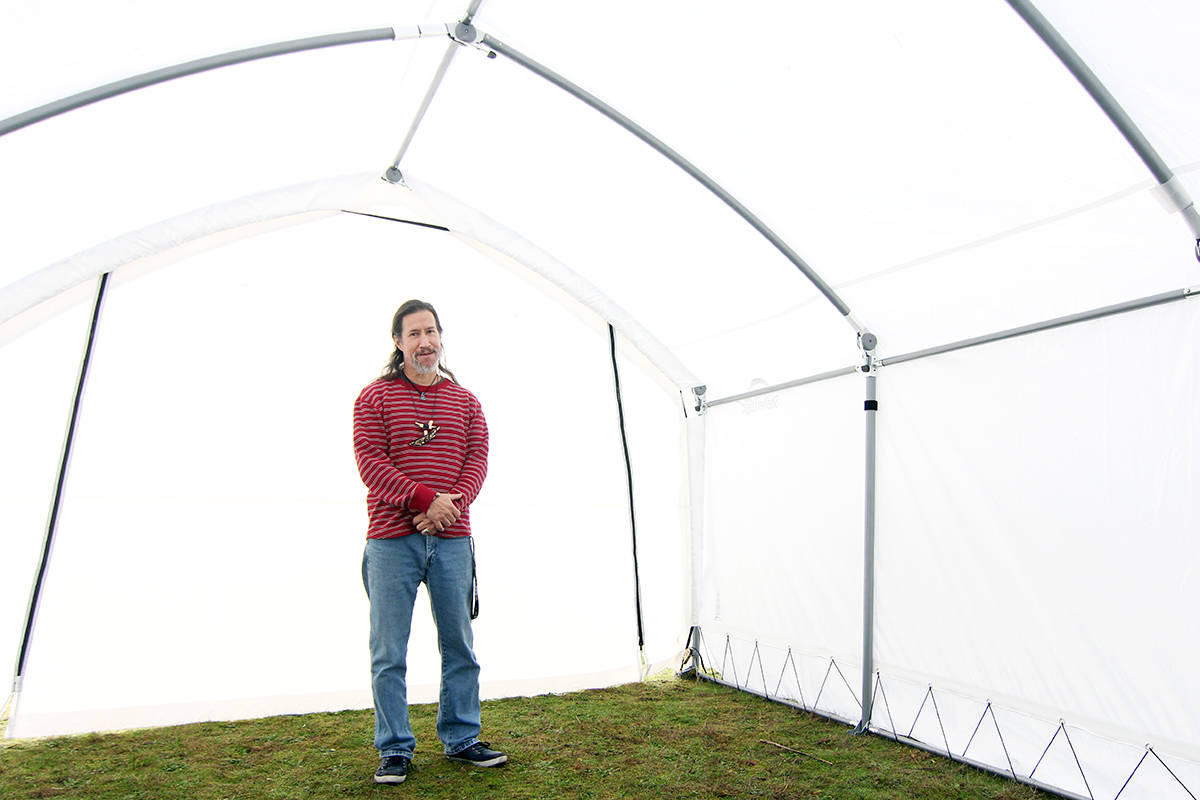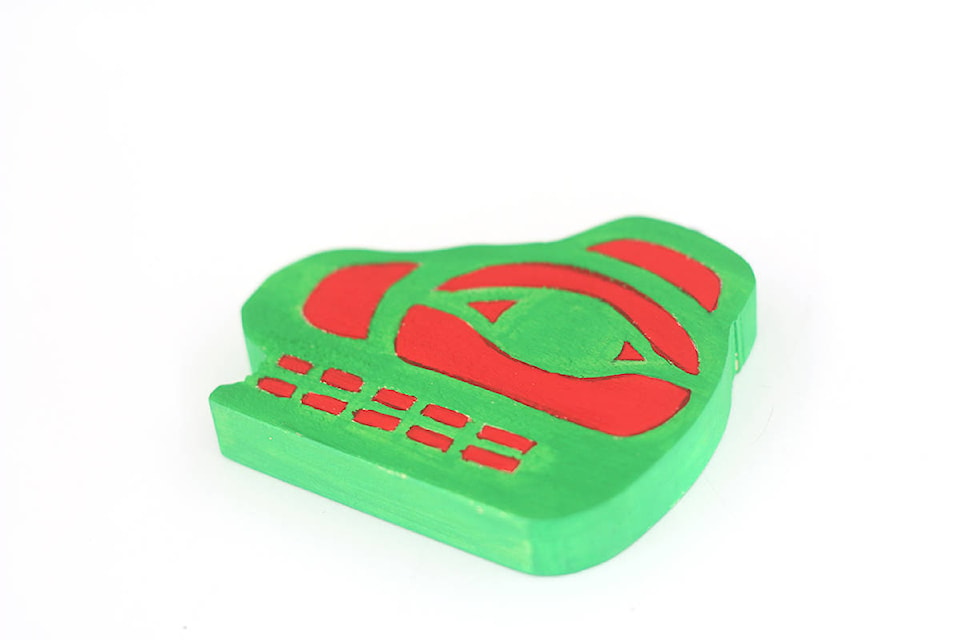A few weeks ago, Robert Vogstad led a group of students up a slope on Slatechuck Mountain to find and chop their own argillite.
“Everybody loved it,” Vogtad said, even the hard climb.
“Everything worthwhile is challenging.”
A Haida artist and First Nations resource worker at GidG̱alang Ḵuuyas Naay, Vogstad is excited by what’s taking shape in the school field — an outdoor carving canopy.
Thanks to the Haida Gwaii school district’s new innovative teaching grant, Vogstad was able to buy some new carving tools for students and set up a 12- by 20-foot canopy where they can carve without worrying how the cedar shavings or argillite dust might colour the school floors. One day, Vogstad hopes there will be a small longhouse for students that could work for dance and ceremony as well as carving, but it’s a good step.
| Silhouetted youth climb up a braided ladder of DNA in the Tree of Life carving underway at GidG̱alang Ḵuuyas Naay. (Andrew Hudson/Haida Gwaii Observer) |
“This is all so new,” Vogstad said, standing by the students’ most ambitious carving project — a nine-foot tall red cedar panel designed by Vogstad which features a towering ladder of double-helix DNA in the centre, with cedar branches at either side to represent the Tree of Life.
A male and female salmon are also taking shape among the branches, as well as a pair of hands with their palms up to say “haawa” as they return the body of a salmon to its ancestral river.
And climbing the base pairs of DNA are the silhouettes of youth, ascending.
Vogstad said students are often apprehensive about carving the panel, but since the project started last spring, about 20 have tried it, beginning by chipping away at the bulk of wood that needs to be removed for the relief carvings to stand out. They hope to finish by National Aboriginal Day in June, and display the panel in the school foyer, just beneath a series of portrait photos of Haida elders that are paired with painted canoe paddles showing their clan crests.
To build up the students’ confidence, they begin by learning to freely draw the fundamental shapes of Haida formline: linear and formed ovoids, triads and salmonoids.
“I’m training their eyes to see the forms, the positive and the negative spaces,” Vogstad said.
They may be basic, he said, but drawing them well challenges even a master artist.
Starting with small wooden halibut hooks, or ýagw táawaay, Vogstad has coached students to try small argillite carvings and, just last week, Christmas tree ornaments done in Haida formline.
In his classroom, Vogstad keeps another illustration of the Tree of Life with its own symbolism — one he uses for the Haida Warrior Conduct program. Based on the idea of a medicine wheel, the tree is surrounded by the human life cycle — baby to youth, adult to elder — and there are photos of role models at each stage, including basketball star Damen Bell-Holter and the late Percy Williams.
Looking at Williams’ portrait, Vogstad explained how it’s when people break out from their comfort zones and take on new challenges that they stop returning to earth as humans.
“People like him were probably able to climb up the Tree of Life, to go to the happy hunting and fishing grounds,” he said, smiling.

